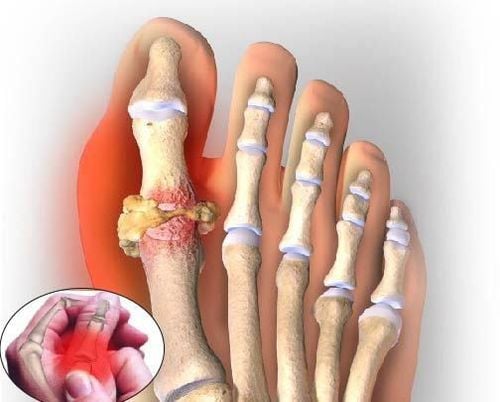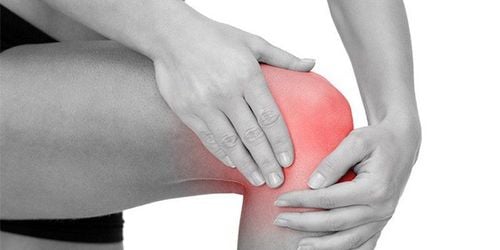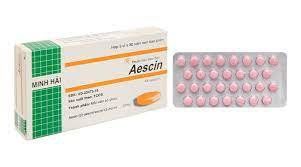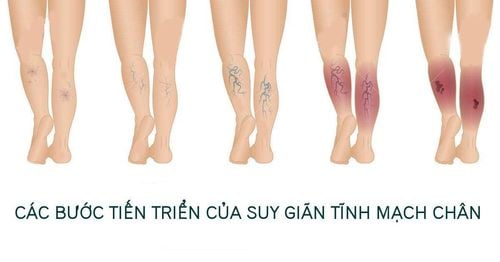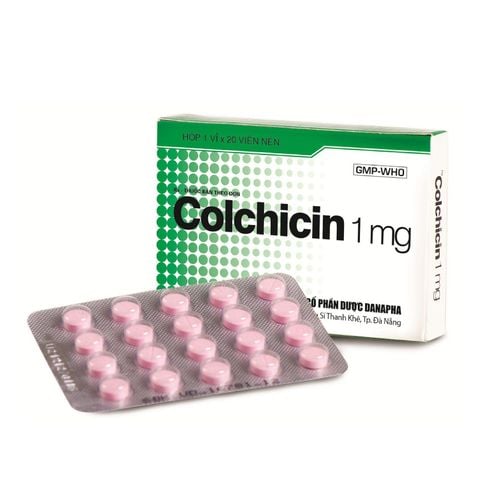This is an automatically translated article.
The article is professionally consulted by Master, Doctor Cao Thanh Tam - Cardiologist - Cardiovascular Center - Vinmec Central Park International General Hospital.Venous insufficiency of the lower extremities worldwide accounts for a significant proportion, of which women account for 70%. Although the disease can be less dangerous, it can cause tight calves, heaviness and fatigue in the legs, night cramps, crawling sensations, sores, and even soft tissue infections near the ankles.
1. Venous insufficiency of the lower extremities
Venous insufficiency of the lower extremities can occur in any vein in the body, but most cases occur in the lower extremities because the lower extremity venous system is longer, complex, and especially affected. effects of gravity when standing a lot.Lower extremity venous insufficiency, also known as varicose veins of the lower extremities or varicose veins of the legs, is a decline in the function of the venous system to return blood to the heart of the venous system located in the legs, leading to blood loss. stagnation causes hemodynamic changes and deformation of surrounding tissue, causing pain, heaviness in the legs, leg edema, paresthesia, crawling ants, cramps, cramps at night... or eczema , non-healing leg ulcers especially common in the elderly, bleeding, enlarged superficial veins, thrombophlebitis, deep vein thrombosis ...
2. Causes of lower extremity venous insufficiency
The cause of varicose veins of the lower extremities is related to a number of risk factors for varicose veins of the legs caused by age-related damage to the one-way valves of the peripheral venous system, which is common in adults. old age or because of living or working posture, having to stand or sit for a long time, sedentary, have to carry heavy loads, obese people, low fiber and vitamin diet... down the legs increases pressure in the veins in the legs and in the long run will damage the one-way venous valves. When these valves are weakened, they will be less able to prevent blood flow back down due to the effect of gravity causing blood stasis in the legs.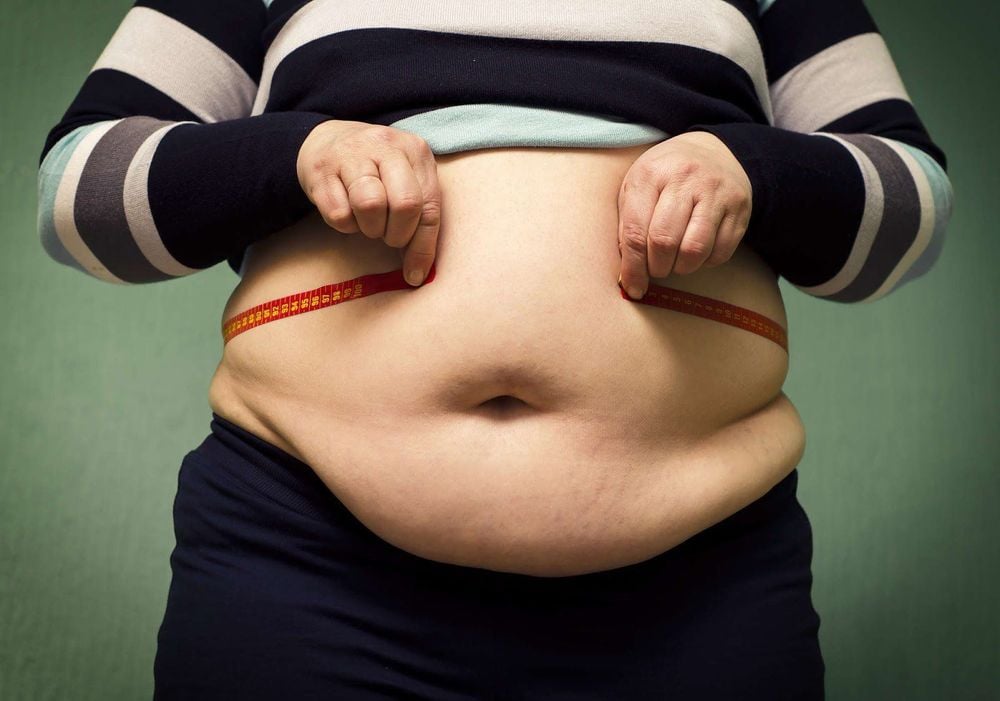
3. The progression of venous insufficiency of the lower extremities
Varicose veins of the lower extremities in the early stages are often not clear, faint and transient, so patients pay little attention and are easy to ignore such as severe pain, leg pain, leg fatigue, slight swelling when standing for a long time, sitting a lot, and cramps. cracking, cramps at night, stinging, paresthesia like ants crawling in the lower leg at night.The advanced stage of the disease will cause swelling of the feet, edema in the ankles or feet, making the patient feel like wearing shoes that are tighter than usual. The lower legs also appear eczema, skin color changes due to blood stasis in the veins for a long time, causing metabolic disorders. Swollen veins or visible varicose veins and bruises on the skin
Causes leg skin ulcers that may initially heal on their own, then the disease continues to progress with the risk of infection, treatment treatment is very complex. In addition to the above signs, the superficial veins under the skin in the legs and thighs are initially only tiny and then enlarged and zigzag sometimes more than 10mm, especially in the ankles and feet.
In general, the clinical presentation of patients with varicose veins of the lower extremities is variable and many patients may have no or very little presentation. Women are more affected than men due to hormonal influences and are often worse at night, especially after standing for a long time.
Varicose veins of the lower extremities are not life-threatening but cause discomfort, pain and loss of aesthetics, hindering activities. However, the complication of this disease is the formation of blood clots in the venous lumen, causing local occlusion of blood vessels or migrating with the blood stream and causing embolism elsewhere, the most dangerous of which is pulmonary embolism leading to heart failure. respiration and death.
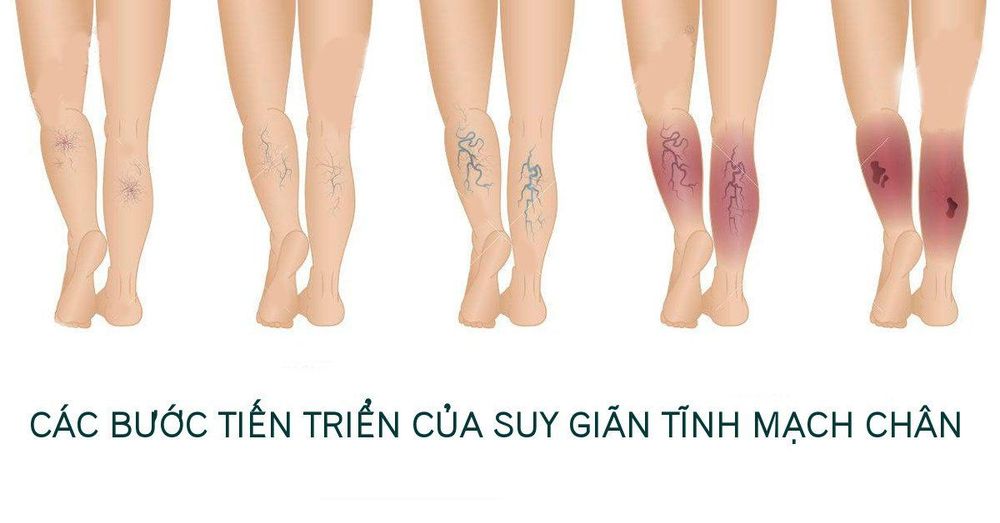
Most of the patients do not know they have the disease and are afraid to go to the doctor, not treating or treating it incorrectly also leads to very unpredictable consequences, possibly even death. There are three complications that people with leg failure and varicose veins experience are thrombosis (blood clots), hemorrhage (bleeding) and leg ulcers if not treated properly.
Enlarged veins that are not removed run the risk of forming a blood clot, causing thrombophlebitis. Blood clots in the blood vessels can dislodge with the backflow of blood to the lungs, causing pulmonary embolism, a high risk of death. Varicose veins gradually enlarge to a certain point when they will burst when a light injury or collision causes bleeding and bruising. The long-term stagnation of the skin metabolism in the legs will lead to eczema, hyperpigmentation and foot ulcers that are difficult to treat.
4. Treatment of venous insufficiency of the lower extremities
Patients are assigned doppler vascular ultrasound for accurate diagnosis as well as more specific advice from the doctor on how to treat. Vascular Doppler ultrasound is a non-invasive, non-toxic screening method for optimal disease detection with high sensitivity and accuracy from 95 to 99%. Medical treatment: Wear venous stockings + Medicine.Surgery: Stripping surgery to remove damaged veins or Muller surgery or percutaneous endoscopic surgery. Endovascular intervention: Sclerotherapy, intravenous laser burning. These two methods have many outstanding advantages such as: high aesthetics, no scars, fast recovery time, no pain and patients can walk normally right after the procedure.Sclerotherapy: The doctor will inject drugs that cause fibrosis into the damaged blood vessels. The patient will be injected with sclerotherapy several times until the varicose veins are no longer present. This is an effective treatment for superficial veins under the skin. Intravenous laser ablation: With the principle of using heat from laser light to flatten the vein, the doctor will thread the laser fiber into the dilated vein. After turning on the power, the laser is directed at the location to be intervened and slowly pulled out, causing the two vein walls to stick together. Simultaneously, the process of anesthesia combined with pumping water around the veins will help reduce the influence of the laser on the surrounding tissues, limit tissue burns as well as avoid complications on the sensory nerves.
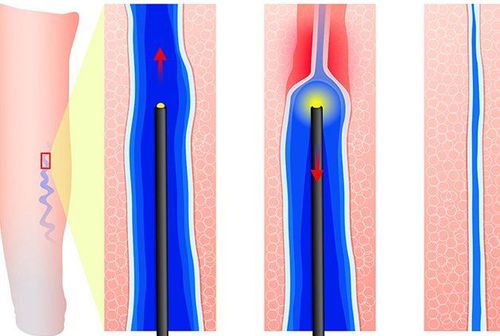
The most serious complication of varicose veins of the lower extremities is the formation of thrombus in the vessel lumen, causing embolism, the development of pigmented plaques on the skin and necrotic ulcers in the skin.
In order to help customers effectively screen for this disease, Vinmec International General Hospital Package of Varicose Vein of Lower extremities helps to determine the causes, complications and level of venous insufficiency..
When choosing to use In the package of lower extremity venous insufficiency, customers will receive:
Specialist Cardiology Examination (by appointment) Peripheral blood cell analysis (by laser counter) Determination of Glucose Quantification of Creatinine Quantification of Pro Calcitonin Measurement of activity AST level (GOT) Measurement of ALT activity (GPT) Determination of LDL - C (Low density lipoprotein Cholesterol) Determination of Triglycerides Quantification of cholesterol Electrolytes (Na, K, Cl) Normal ECG Echocardiogram, transpericardial chest Straight chest X-ray Doppler ultrasound of the arteries and veins of the lower extremities (Vins of the lower extremities).
Please dial HOTLINE for more information or register for an appointment HERE. Download MyVinmec app to make appointments faster and to manage your bookings easily.





